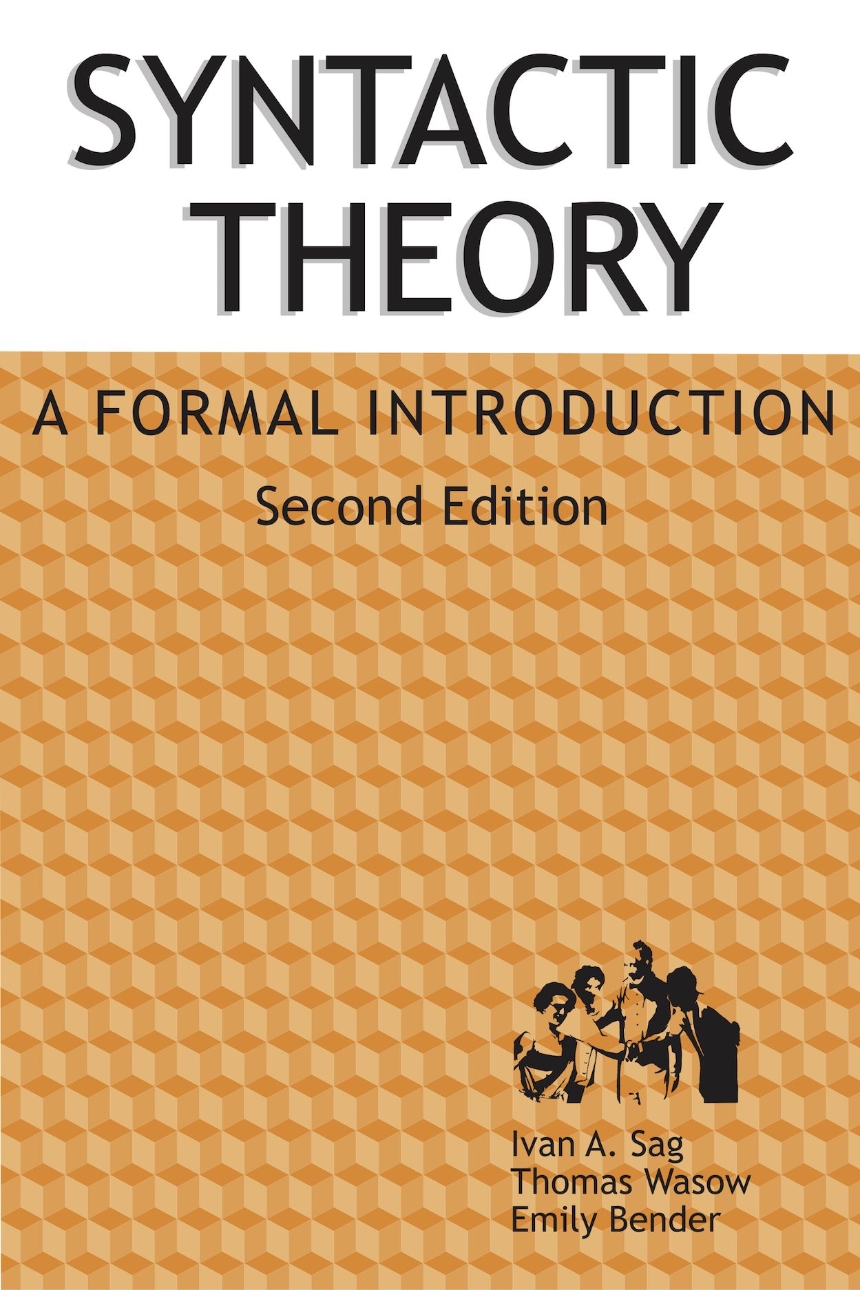Center for the Study of Language and Information
Syntactic Theory
A Formal Introduction, 2nd Edition
Second Edition
9781575864006
9781575866406
Distributed for Center for the Study of Language and Information
Syntactic Theory
A Formal Introduction, 2nd Edition
Second Edition
This second edition of Syntactic Theory: A Formal Introduction expands and improves upon a truly unique introductory syntax textbook. Like the first edition, its focus is on the development of precisely formulated grammars whose empirical predictions can be directly tested. There is also considerable emphasis on the prediction and evaluation of grammatical hypotheses, as well as on integrating syntactic hypotheses with matters of semantic analysis.
The book covers the core areas of English syntax from the last quarter century, including complementation, control, "raising constructions," passives, the auxiliary system, and the analysis of long distance dependency constructions. Syntactic Theory’s step-by-step introduction to a consistent grammar in these core areas is complemented by extensive problem sets drawing from a variety of languages.
The book’s theoretical perspective is presented in the context of current models of language processing, and the practical value of the constraint-based, lexicalist grammatical architecture proposed has already been demonstrated in computer language processing applications. This thoroughly reworked second edition includes revised and extended problem sets, updated analyses, additional examples, and more detailed exposition throughout.
Praise for the first edition:
"Syntactic Theory sets a new standard for introductory syntax volumes that all future books should be measured against."—Gert Webelhuth, Journal of Linguistics
The book covers the core areas of English syntax from the last quarter century, including complementation, control, "raising constructions," passives, the auxiliary system, and the analysis of long distance dependency constructions. Syntactic Theory’s step-by-step introduction to a consistent grammar in these core areas is complemented by extensive problem sets drawing from a variety of languages.
The book’s theoretical perspective is presented in the context of current models of language processing, and the practical value of the constraint-based, lexicalist grammatical architecture proposed has already been demonstrated in computer language processing applications. This thoroughly reworked second edition includes revised and extended problem sets, updated analyses, additional examples, and more detailed exposition throughout.
Praise for the first edition:
"Syntactic Theory sets a new standard for introductory syntax volumes that all future books should be measured against."—Gert Webelhuth, Journal of Linguistics
Table of Contents
Preface
1. Introduction
2. Some Simple Theories of Grammar
3. Analyzing Features of Grammatical Categories
4. Complex Feature Values
5. Semantics
6. How the Grammar Works
7. Binding Theory
8. The Structure of the Lexicon
9. Realistic Grammar
10. The Passive Construction
11. Nominal Types: Dummies and Idioms
12. Infinitival Complements
13. Auxiliary verbs
14. Long-Distance Dependencies
15. Variation in the English Auxiliary System
16. Sign-Based Construction Grammar
Appendix A: Summary of the Grammar
Appendix B: Related Grammatical Theories
Answers to Exercises
Glossary
References
Index
1. Introduction
2. Some Simple Theories of Grammar
3. Analyzing Features of Grammatical Categories
4. Complex Feature Values
5. Semantics
6. How the Grammar Works
7. Binding Theory
8. The Structure of the Lexicon
9. Realistic Grammar
10. The Passive Construction
11. Nominal Types: Dummies and Idioms
12. Infinitival Complements
13. Auxiliary verbs
14. Long-Distance Dependencies
15. Variation in the English Auxiliary System
16. Sign-Based Construction Grammar
Appendix A: Summary of the Grammar
Appendix B: Related Grammatical Theories
Answers to Exercises
Glossary
References
Index

